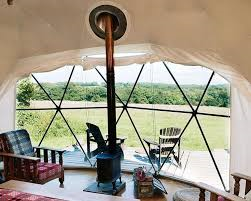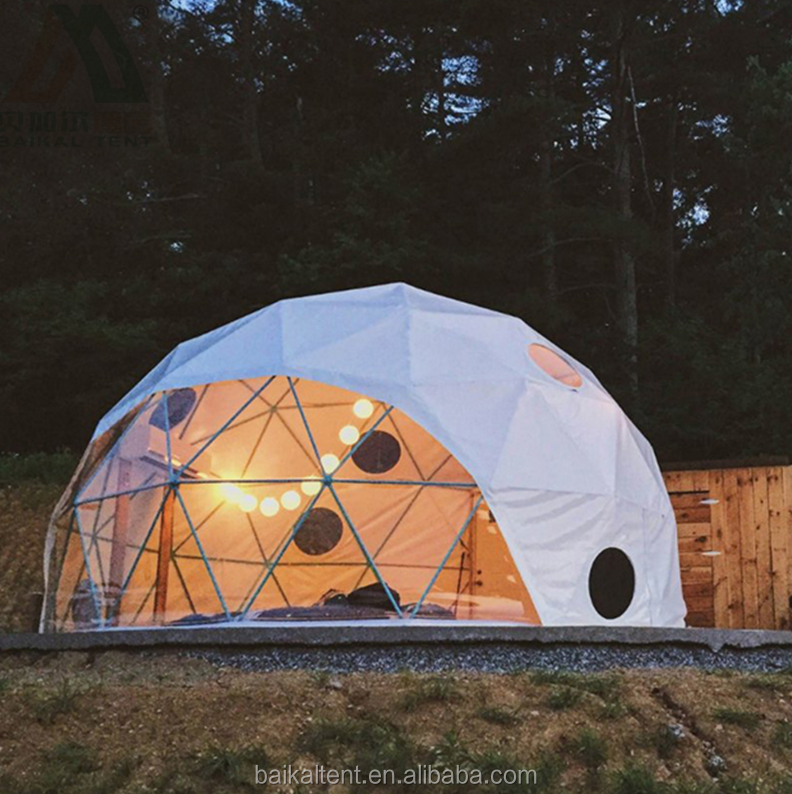
One of the most frequent questions I am asked about is Survival Structures. In this article How To Select The Best Shelter – A Versatile Geodesic Dome, I am going to discuss the Geodesic Dome and some of its outstanding features and uses.
Having manufactured these for a while now, I have come to respect their many diverse and amazing uses. These domes can be made out of many different materials, from Bamboo, PVC Pipes, Steel and wood etc. You are limited only by your imagination with regard to its material and its uses.
Where Did The Geodesic Dome Design Originate?
The first geodesic dome was designed after World War I by Walther Bauersfeld, chief engineer of the Carl Zeiss optical company. It was built for a planetarium to house his planetarium projector. A first, small dome was patented, constructed by the firm of Dykerhoff and Wydmann. This was built on the roof of the Zeiss plant in Jena, Germany.
I am not going to try and go into the theory of the dome in this article. There are calculators etc. online that you can use if you wish to manufacture your own Geodesic Dome. Let’s first consider the purposes and locations of your Dome.
Domes For Homes – And Other Things
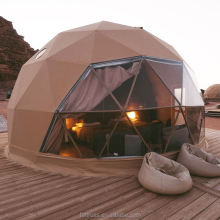
As I am addressing the question of Survival Structures – The Versatile Geodesic Dome for a home I will start with the Home Dome.
Home Dome
A Geodesic Dome makes an awesome home. I know that it conjures up visions of a huge tent in which you will live, but what a tent? This Tent can be big or small. It can be built with Canvas, Glass, Plastic wood or whatever you can dream up. Fancy a Mezzanine floor or Double Storey? Any and all of it is possible. But first, we must determine the weather conditions and type of terrain where the dome will be erected.
Terrain
This is something you will need to consider before erecting your dome. As with all homes, you will want your floor to be level to stop things from moving around. To this end, you will have to either level a platform on your site or sink bollards for a floor structure.
In most cases, your choice of the type of platform that you are going to build will be determined by the weather. If you are building on a slope where there is significant rain, you might want to consider building a floor off-ground. A raised platform can be built rather than digging into the slope. Whichever platform you choose, it should be able to prevent the runoff water from the slope from running into your Home.
Marsh/Floodplain
If you are building in a flood plain, then It would also be in your best interests to build on a platform. This will keep your home dry and prevent algae etc building up and preventing rot etc. Building material will probably be in short supply so you need to make what you have last as long as possible.
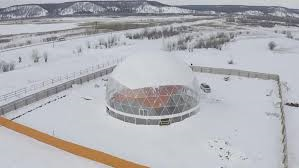
Weather
The weather will play an important role in deciding the position of your dome. You may not have much of a choice with all the “refugees” that will be flooding into the areas. You will need to consider some, if not all, of the following issues:
- Heat
- Cold
- Rain
- Lightening
- Wind
- Sewage
- potable water
- Dumpsite for waste – it won’t be yours alone.
These items will play a role in your decisions regarding Fabric cover vs Wood vs shade cloth etc. They will also play a role in which way your dome faces and whether or not you need a wood stove. The domes can have reflective panels added inside to keep the heat in. They can also have a padded lining to keep the entire dome warmer.
Gogas, Rodents, Snakes, Cockroaches And Mosquitos
All the things our Ladies love finding in their homes. Chances are great that you will have some kind of Gogas that try and find their way into the home. To prevent this you will need to pay attention to your floor, windows and doors. Now a fitted canvas floor is great and does a great job of keeping all the little creepy goodies out but, in the long term, it is not going to work. The gogas will eventually walk through and you will have a Sunday floor, very holy.
The Canvas groundsheet/floor might be useful when you first erect your dome, as a temporary solution. You should set up a proper Clay or cement floor. Many will now be asking “Why not wooden floors”? Well, there is unlikely to be much free wood or any wood for that matter and you will have to make do with what you can find in the area. Putting in a floor will be necessary to try and close the gap between the bottom of the dome and the ground to keep out the snakes and other gogas.
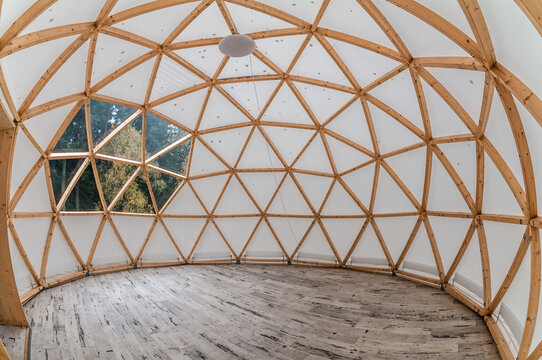
The dome covers can be made with windows and vents which allows the cooler fresh air in at the base and the hotter air out through the roof vents. these vents can include mosquito netting to keep the little flying critters out.
Size Matters
Size really does matter – ask your wife, especially if you are going to be in the dome for a while. Luckily, today we can extend things so you can always add a room or two, a kitchen, a bathroom and more, as the funds allow it, so eventually, your wife will be happy with it and you will have something to be proud of. So now we must consider what you are going to have your dome’s frame made of.
What Is Your Pole To Be Made Of?
Now your poles, known as Struts, can be made of a number of materials and you will need to balance strength and weight. This being said, once the cover has been installed, even the PVC Piping dome is rugged enough to last.
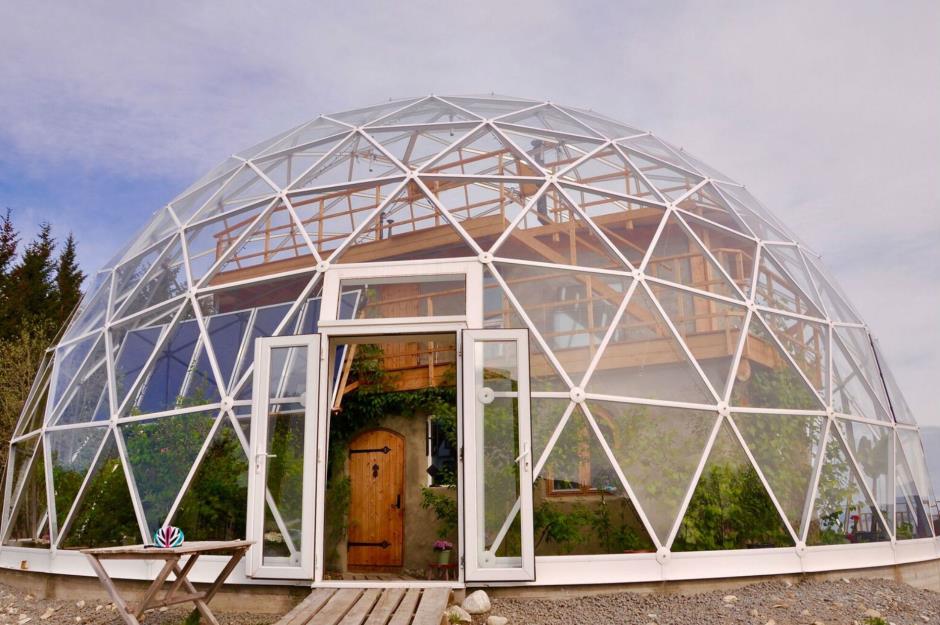
I personally like the PVC Piping as it is light and flexible so that there is movement in the wind and less chance of the cover tearing. The direction that the doors and windows face is also very important and this will also count towards the rigidity of the structure on windy days.
These structures can be made out of PVC piping from 20mm to 50mm or Galvanised metal piping in the same sizes. You can also manufacture these out of Bamboo, wood slats and even dowels.
Space And Weight
When looking at the pictures of these beautiful Geodesic Dome Homes I am sure you are imagining a 5 ton truck arriving with all the parts that need a forklift to unload. Well, belay that thought. Depending on the type of structure (V1 – V4) these structures usually arrive in 3 – 4 boxes that can each be carried by 1 man.
Depending on the material used and the size of the dome, most domes would fit on the back of the Buckie with lots of room to spare. They would even fit in the boot of a car with room to spare.
Tent Cover
Many of us have now bought tents, especially newbie preppers. The tents are usually of light material and often not designed for long-term occupation. I know I was one of these eager beavers that went out and purchased a good-sized, lightweight tent that would not take up too much space in my vehicle. This is how I started manufacturing Geodesic Domes. I built one to go over my tent to protect it from the elements, in the hope that it would last longer.
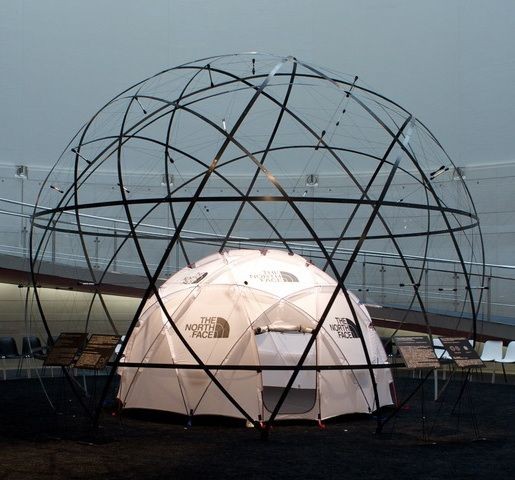
I built a dome the first time to fit over my tent. I partly covered The Dome with Plastic (over my tent) and the sides with shade cloth. This gave us a fair amount of room around our tent to move about, sit in the shade and on one side there was even room for a very small garden.
So if you have invested in a tent and now have reservations about how long it will last out there in the elements, don’t dump it. buying or building a Geodesic Dome to put over your tent and cover it with shade cloth and plastic can do the job. This will certainly help it last longer and, more importantly, it will keep your tent cooler in the harsh summer heat of South Africa.
Other Uses For The Geodesic Dome.
As I said earlier, You are only limited by your imagination. There are an incredible number of variations and uses for the Geodesic Dome and here I am going to list a few that are related to Prepping and survival:
- Cover over your Tent For Shade, dust and Rain Protection.
- An Extra Bedroom for Your Tent
- A Sunroom
- Storeroom
- Workshop
- Greenhouse
- Pool Room
- Bathroom/Toilet for your tent
- Chicken Coup
Where to Start With Your Geodesic Dome
Once you have decided on a Geodesic Dome, The next step is to decide whether to build or Buy your dome. This decision will be governed by whether or not domes are available for purchase or if you are wanting to build if materials and or tools are available or not.
Decide On the Size
The purpose for which the dome is to be used will play a part in determining the size of the dome.
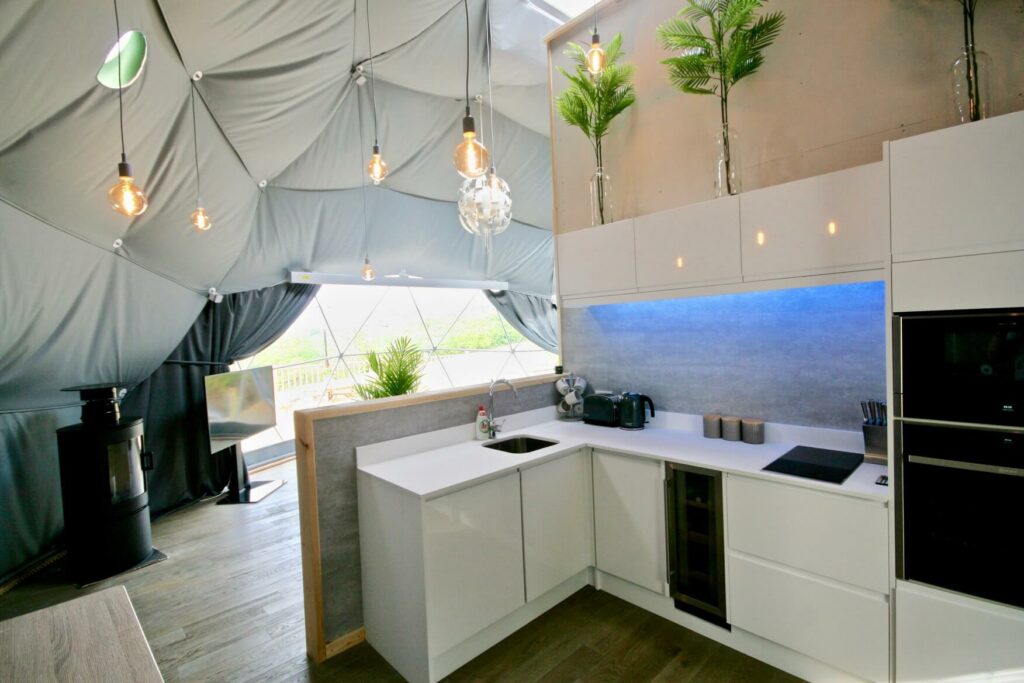
- Must the dome cover your tent or is it a stand-alone dome?
- Do you want a mezzanine floor bedroom?
- Is it to house the entire family?
- Where will the Cooking be done?
- What about a Shower and or toilet?
Draw a rough floor plan and then try and put sizes to it and then draw it to scale. This will give you a good idea of the size Dome that you need.
Frequencies Explained
Watch this short video to understand the frequencies, v1 – v6
What Type of dome do you need? The bigger the dome, the heavier the cover and you might need a V3 – V6. This is basically the frequency of the triangles. The more triangles, the stronger the structure. See the diagrams below.
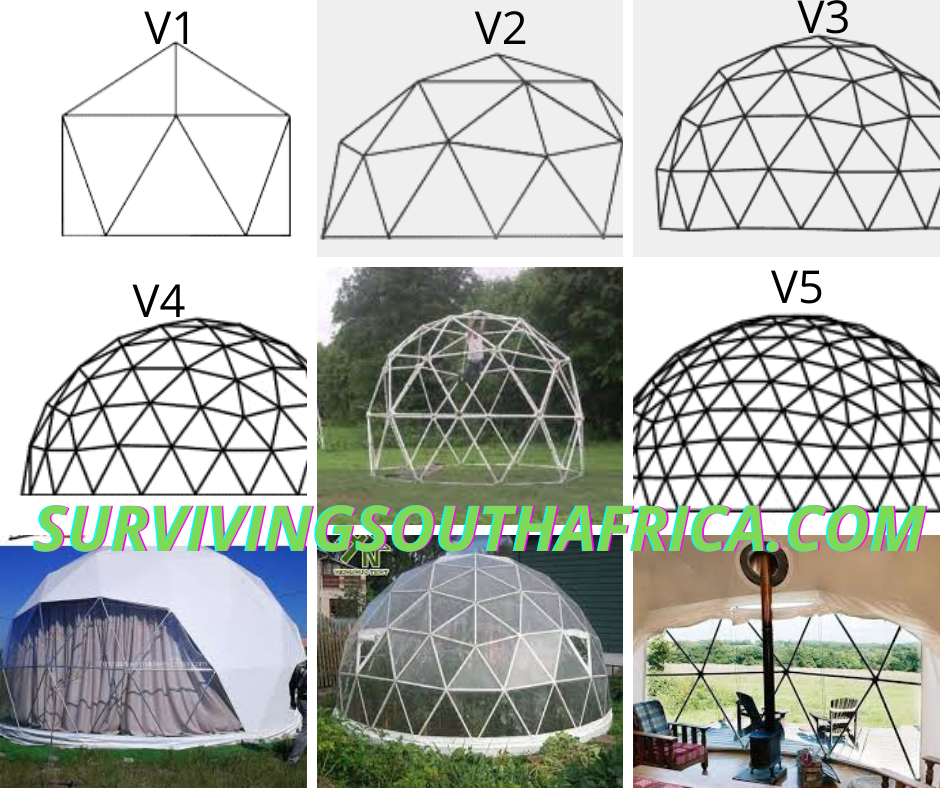
PVC, Metal, Or Wood Frame
You will now start understanding why I titled this article How To Select The Best Shelter – A Versatile Geodesic Dome. The Geodesic Dome is just so versatile. I think it will be fairly difficult to beat.
Depending on what you plan to do with your dome, you will need to decide what you want to make your struts out of. There is a large range of suitable materials but you need to consider what you are covering the dome with, What the weight is that the struts must hold up and how sturdy you need the frame to be.
For a chicken coup, Tent cover or temp tool shed etc. PVC will be fine if you are covering it with plastic or a lighter Canvas. Even for a longer-term dwelling, the PVC would work provided you do not try and be too creative. A mezzanine floor unless the structure is free-standing and does not rely on the dome for support is not an option with a PVC pipe dome.
If you are building a bigger, long-term structure, you should consider metal or wooden struts with a heavy-duty canvas cover, glass or wooden cladding. In any event, a permanent structure will need plans and municipal approval so engineers will be involved.
To add to the aesthetics of the dome, Metal struts can be painted, powder-coated or galvanised which will add to the frame’s durability.
Platform Construction
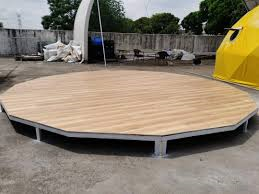
Nobody wants to have a grass or mud floor in their home. Before you erect your dome, ensure that you have a suitable base constructed. If you are building on a slope, a level deck would be an ideal platform. This will stop some of the cold coming through the floor and, if you are near a river or marsh, it will keep things dryer.
Geodesic Dome Skin
This item can singlehandedly double the price of your Dome. So consider your needs rather than your wants, if finance is a serious consideration. A canvas cover with some windows and vents to let the cool air in and the hot air out will work well and meet your needs.
Reflective panels can also be added to the dome to reflect heat and make the dome less like a sorna.
A solid cover of wood and glass is also an option. So too are metal and fibreglass. These will certainly improve the circumstance in the Dome. But, beware, they can add a lot to the cost of the Dome.
Windows, Vents and Doors
Doors and vents are an absolute must and windows can be included for a modest cost. There is no need to pave huge panoramic windows. These windows will need curtains, another big cost, not that the Window itself adds too much more.
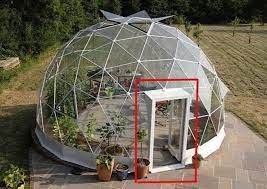
You will certainly need to have a few vents up high to vent the hot air. Just as necessary will be some vents lower down to let fresh cooler air in. You will note I said COOLER air, not COOL air. If you are aiming to erect your dome in the Karoo, you will have a problem trying to find cool air during the day!
Build It Yourself vs Purchase A Geodesic Dome
This is something you must consider carefully. Consider your skill level and stayability. Once you decide, either way, you will need to see it through to the end.
Self Build
Building your own Geodesic Dome is not impossible. In fact, if you are slightly handy with a saw, drill and spanners, you could probably do it yourself and save a fair amount of cash. A word of advice, measure twice and cut once. Every mistake you make adds to your costs, not to mention the delays and frustration.
Once you have purchased the material and you then decide it is too much to complete, it is going to be an expensive exercise trying to get someone else to complete it.
Purchasing A Geodesic Dome
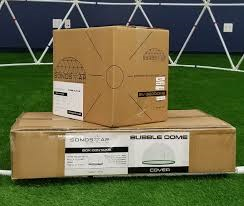
On the flip side, ensure that, if you decide to buy, you make sure that it is a reputable company. If you are going to buy it, I would suggest that you pay the company to install the dome too. You need to make sure that it is done correctly. You do not want to pay for the dome and then you assemble it incorrectly and have problems with it later.
Just imagine a huge thunderstorm and you find that your dome leaks due to an error in the installation?
Need Help Building A Geodesic Dome?
If you need help trying to buy a Geodesic Dome, Good Luck! There are some offered for sale in South Africa but they are all imported. That is why I started building them for my own use and for friends.
If you need help with your dome, feel free to contact me here and let me know what type of dome you are looking at, its size and the purpose for which you wish to use the dome. I will gladly help where I can.
I have been asked by many people to build them a dome. I have no issue with this. I do help people but you must understand that I build them from home. I treat it as a cottage industry so if you are happy with this and want me to help you, please click here.

“It is better to have prepared and never to need it than to be unprepared and be in desperate need of it”.
Be Aware. Be Safe. Be Prepared!

